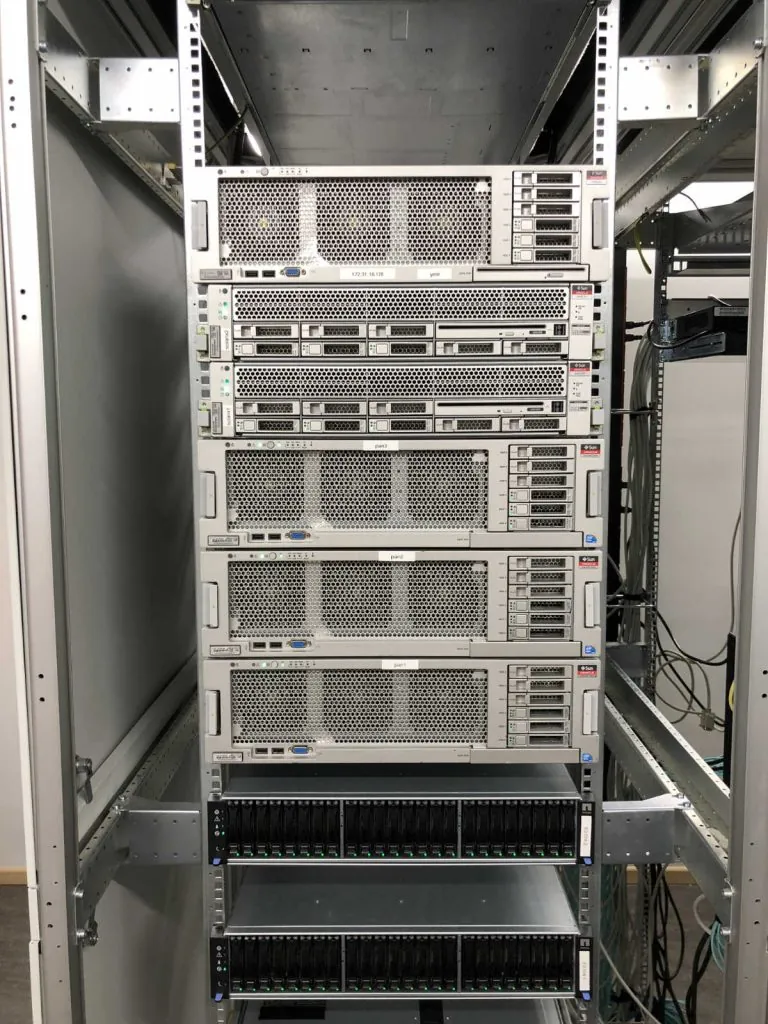The pharmaceutical company Pfizer operates one of Europe’s most modern pharmaceutical distribution centers in Karlsruhe. From there, the company ships around 250,000 pharmaceutical packages to pharmacies and wholesalers within Germany every day. To ensure their supply and meet future challenges, the hardware and software responsible for logistics processes has now been replaced and sustainably renewed. Pfizer, the world’s largest pharmaceutical company based in the USA, commissioned the software manufactory TUP from Stutensee near Karlsruhe to carry out this task.
“In recent years, the volume of data to be archived at Pfizer has increased continuously. This had also led to longer access times for individual data records, higher maintenance costs (see Service and Maintenance), and an increased risk of failure. Due to these developments, Pfizer ultimately decided to have the replacement carried out,” says Ulrich Sommer, IT and Infrastructure Project Manager at TUP, explaining the reasons for the corporate facelift.
Hardware and software: Fast servers and distributed storage
To ensure that the order and warehouse management system could continue to meet customer requirements, the hardware and software had to be dimensioned in advance, a process known as ‘sizing’. This involves collecting data on usage scenarios and then determining the optimal hardware and software configuration through targeted analyses and process evaluations. Based on the measurement results obtained, the components of the new system were then selected for Pfizer: servers, mass storage, network, and storage area network (SAN). In addition, data migration was complex and, above all, time-consuming, as the mass of archive data had to be taken into account – this also includes large volumes of Lobsegments (memory-intensive archive files such as delivery notes in PDF format). Thanks to the above-mentioned ‘sizing’, the newly available storage space was expanded in a future-proof manner. From now on, Pfizer will be using a tiered storage solution. Tiered storage describes the assignment of different categories of data to different types of storage media with the aim of reducing overall storage costs. At the pharmaceutical manufacturer, these consist of a combination of SSD cache, fast storage, and high-capacity, slow storage. In addition to this storage combination, the server processors have been accelerated by several factors.
Why all this effort? After all, around 20 million pharmaceutical packages are stacked on approximately 15,000 pallets in the high-bay warehouse in Karlsruhe. and 250,000 pharmaceuticals leave the goods issue department every day. Without high-performance hardware and software, it would be impossible to handle such large volumes of goods today,“ warns project manager Ulrich Sommer. ”The servers now provide four times as much main memory as cache, and the three application containers, consisting of the application, database, and dialog system, also have significantly more main memory available. The pilot system was designed accordingly so that several independent instances, such as development, testing, and quality assurance, can run simultaneously. It should be noted that Pfizer’s network is very complex. The systems are integrated into different physical networks, and the three application containers mentioned above, i.e., the applications that run isolated from each other but in a shared environment, are interlinked multiple times.” In order to keep the data migration phase as short as possible, the entire data archive was imported into the new database in parallel with ongoing production before the new production cluster was put into operation. This meant that the actual commissioning of the production system, which of course took place while the system was running, was limited to just seven days. At the same time, the production cluster was set up in Pfizer’s distribution center and the cluster acceptance test was carried out.
Test scenarios on the TUP campus
The implementation was completed so quickly and successfully because various scenarios had been tested on the TUP campus in advance of the data migration. In addition, a new operating system was installed in parallel within these scenarios, which skipped two generations. The migration itself was then carried out in several steps. All systems (servers, mass storage, network and SAN components) were first installed, migrated and tested. Generating the application system from the source code was a priority. The forms and reports dialog system was also replicated one-to-one, as Pfizer wanted it to remain unchanged.

Backbone – open-heart surgery
In addition to the classic hardware and software components, the pharmaceutical manufacturer’s local area network (LAN) also had to be expanded to provide the required bandwidth. To this end, the old network components of the backbone were replaced with more powerful ones on a non-production day. “Replacing a backbone is similar to open-heart surgery, because ultimately all data rates are bundled in the backbone network,” says Ulrich Sommer. Nevertheless, TUP was able to implement a pilot system in a very short time, which was created for intensive testing by Pfizer with the new database version and the current operating system in a test environment. “This new environment is now in place so that future software upgrades can be tested outside the production environment, including data backup and archiving,” concludes Sommer. “This makes it easy to implement tested software components into the production system in a timely manner.” Following the successful ‘rejuvenation’ of the Pfizer WMS engine, operations are now well prepared for new tasks such as the recording of unique serial numbers for critical products as required by law from February 9, 2019, as part of counterfeit protection (keyword: ‘serialization’).
Teaser image: Pfizer – Karlsruhe site